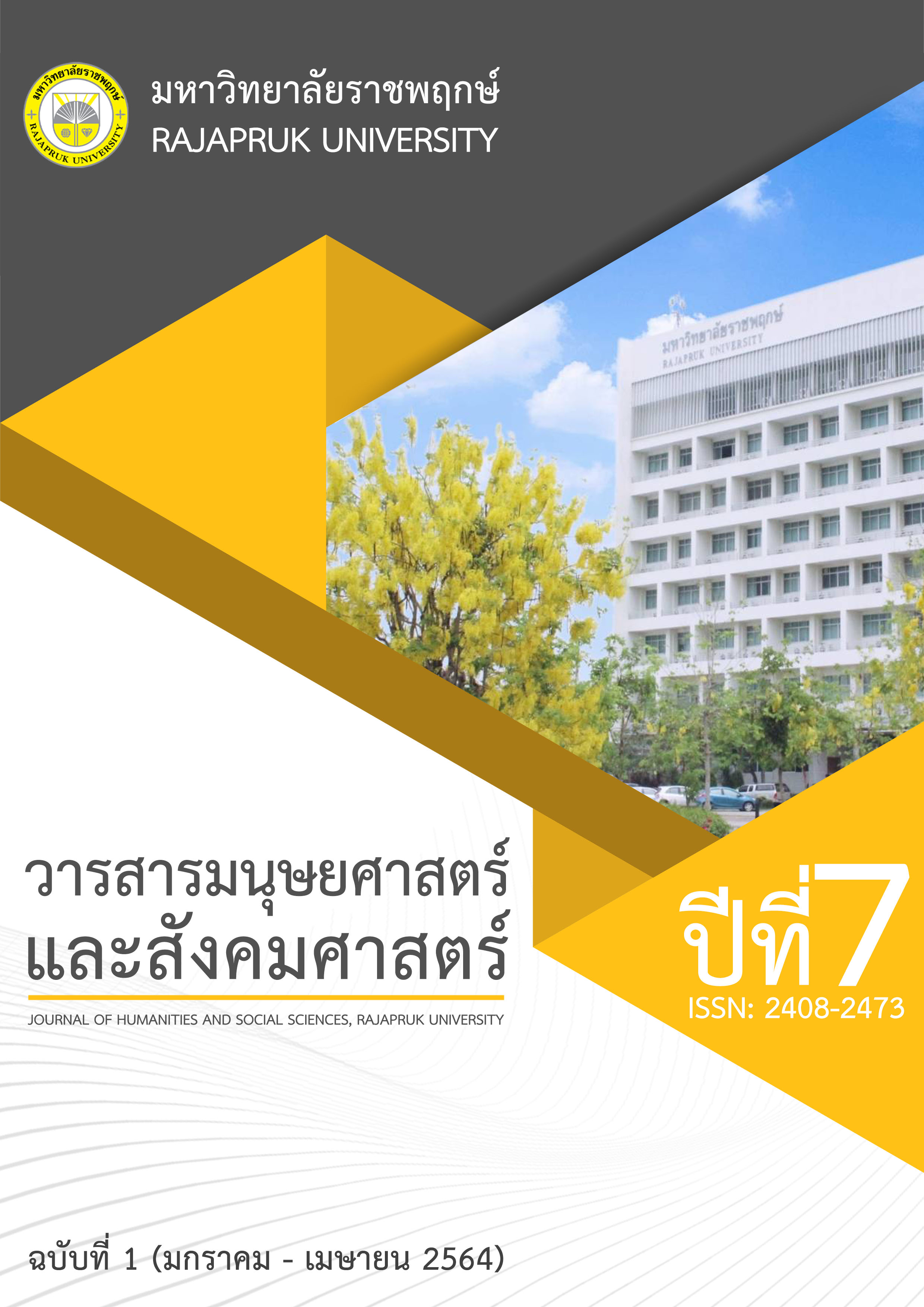Designing Achievement Activity by using CIPPA Model of Analytical Thinking for Thai Subject on the Topic of Klonglokkanit (Thai Literature) of Mathayomsuksa 1 Students
Main Article Content
Abstract
The objectives of this thesis were: 1) to design learning activity based on CIPPA model on the topic of Klonglokkanit to be effective according to the criteria 80/80. 2) to develop the activity in critical thinking skills on the topic of Klonglokkanit by using CIPPA model. The sample group was 30 students from Mathayomsuksa 1 students, semester 2, academic year 2017. The research was obtained from the cluster random and the classroom as random units were composed of 1) learning activity by using CIPPA model for Klonglokkanit topic. 2) learning plan of Klonglokkanit topic. 3) analytical skill test for Klonglokkanit topic. The statistics were used for data analysis Find the effectiveness of learning activity from E1/E2 formula as 80/80 criterion and percentage
The results of the study were as follow: 1) the learning activity by CIPPA model the efficiency was 87.75/84.44 which was higher than 80/80 threshold. 2) the result of analytical activity in analytical skills for Mathayomsuksa 1 students that was studied by learning activity based on the CIPPA model, overall passing the criteria for achieving the grades with an excellent score of 86.04%.
Article Details
References
ดวงใจ ไทยอุบุญ. (2556). ทักษะการเขียนภาษาไทย. พิมพ์ครั้งที่ 8. กรุงเทพฯ: สำนักพิมพ์แห่งจุฬาลงกรณ์มหาวิทยาลัย.
ทิศนา แขมมณี. (2556). รูปแบบการเรียนการสอนทางเลือกที่หลากลาย. พิมพ์ครั้งที่ 8. กรุงเทพฯ: สำนักพิมพ์แห่งจุฬาลงกรณ์มหาวิทยาลัย.
นงเยาว์ บานฤทัย. (2555). ผลการจัดกิจกรรมการเรียนรู้ภาษาไทยโดยใช้รูปแบบซิปปา เรื่อง คำราชาศัพท์ ชั้นมัธยมศึกษาปีที่ 2. วิทยานิพนธ์การศึกษามหาบัณฑิต หลักสูตรและการสอน มหาวิทยาลัยมหาสารคาม.
ประภัสสร โพธิ์ศรีทอง. (2556). โลกาภิวัตน์กับการจัดการวัฒนธรรม. ค้นเมื่อวันที่ 27 มีนาคม 2563, จาก https://oknation.nationtv.tv/blog/print.php?id=887666.
ไพฑูรย์ สินลารัตน์. (2560). การประชุมทางวิชาการของคุรุสภา ประจำปี 2560 เรื่อง “ครูยุคใหม่ สร้างเด็กไทย 4.0”. กรุงเทพฯ: โรงพิมพ์องค์การค้าของ สกสค.
วันเพ็ญ กลิ่นอ่อน. (2559). การพัฒนาความสามารถในการคิดวิเคราะห์ของนักเรียนชั้นมัธยมศึกษาปีที่ 1 โดยใช้รูปแบบการจัดการเรียนรู้แบบซิปปาร่วมกับเทคนิคการใช้คำถาม. วิทยานิพนธ์ครุศาสตรมหาบัณฑิต หลักสูตรและการสอน มหาวิทยาลัยราชภัฏนครปฐม.
สถาบันทดสอบทางการศึกษาแห่งชาติ (องค์การมหาชน). (2559). รายงานผลการทดสอบทางการศึกษาระดับชาติขั้นพื้นฐาน (O-NET) ชั้นประถมศึกษาปีที่ 6 และชั้นมัธยมศึกษาปีที่ 3. กรุงเทพฯ: สถาบันทดสอบทางการศึกษาแห่งชาติ (องค์การมหาชน).
สำนักวิชาการและมาตรฐานการศึกษา. (2551). เอกสารประกอบหลักสูตรแกนกลางการศึกษาขั้นพื้นฐาน พุทธศักราช 2551. แนวปฏิบัติการวัดและประเมินผลการเรียนรู้. สำนักงานคณะกรรมการศึกษาขั้นพื้นฐาน กระทรวงศึกษาธิการ.
Bloom, B.S. (1956). Taxonomy of educational objectives. Handbook II: Affective domain. New York: Mckay.
Bloom, B.S. (1976). Human Characteristics and School Learning. New York: McGraw-Hill.


